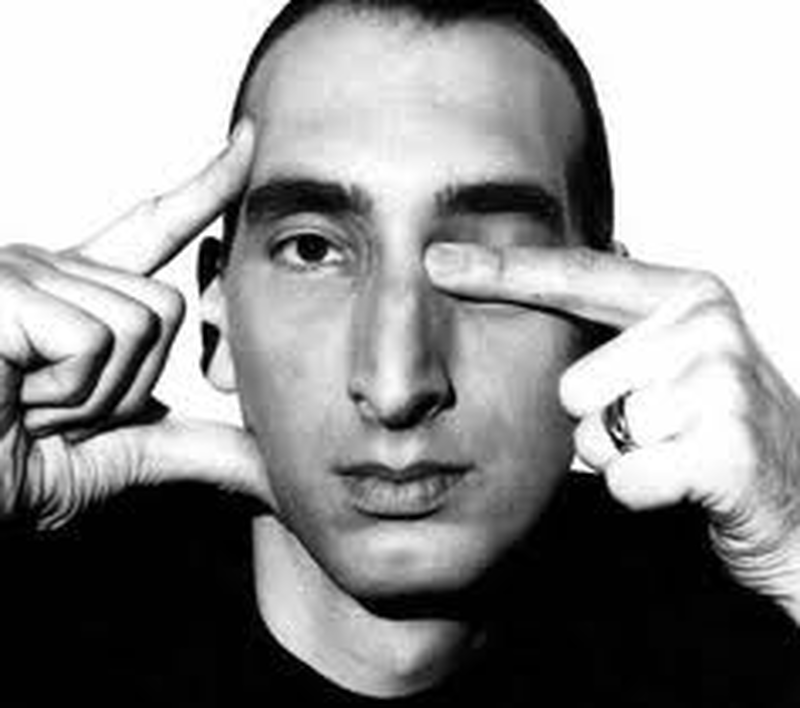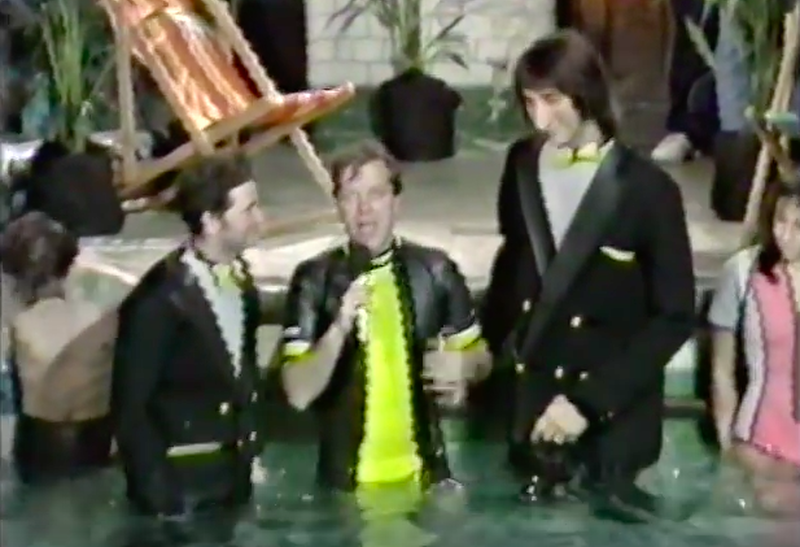SKV boss and former journo Andy Spinoza remembers Manchester's towering fashion pioneer
“You’re the only one here dressed for the occasion.” The voice was Tony Wilson’s.
The location was one of the innumerable bar and restaurant openings I hosted in the late 80s, early 90s.
The suit was a royal blue with subtle pinstripes - my first from L’homme, just-right for the boss of a new PR agency. “That’s from Richard Creme, isn’t it?” said Tony. It was a statement not a question.
Tony knew a Richard Creme suit because L’homme was for years the only retailer in Manchester for men who really cared about clothes. These style-conscious guys had suffered when Manchester had been a sartorial desert. Now Richard Creme was in town to sell and, more importantly, consult on what to buy and how to wear quality, interesting fashion from international sources.
Richard Creme and his mobile L’homme stores was a real trip. It was art, performance, fashion, celebrities...
Richard first brought the Rodeo Drive-inspired street theatre of the buzz-and-enter door to the St Ann’s Square store. He was the first person I heard call a pair of trousers a ‘piece’.
This was not the schmatte which my rag trade relatives used to describe the products of the fashion business. Richard the retailer was a man who respected the quality of the cloth, the skill of the tailor, the creativity of the designer, as much he respected the tastes and knowledge of his customers.
Hard to believe today, with our array of designer diffusion stores, but Richard Creme really was the first. Richard Creme and his mobile L’homme stores was a real trip.
It was art, performance, fashion, celebrities, fun, media and money, and best of all, it was Manchester.

I observed his Manchester client base with compulsive curiosity. From the urgent-looking street kid with more cash in his pockets than was right for a lad of his age, to the self-made men, and the racier lawyers and accountants. If you popped into see Richard at his peripatetic store, lastly on Bridge Street, you’d be introduced to someone interesting.
Richard knew his mission to bring quality and style to Mancunians was raising his city’s horizons, helping to rid us of our cloth cap image. I once quoted him in an article for the the Manchester Evening News as saying: “When I first went to the collections the designers laughed. They'd never heard of Manchester. They never knew the north existed. Now, slowly but surely, we have built an international reputation.”
The 7ft 3in Richard gave the famous a new reason to talk about Manchester, and gave me tall tales for the paper. About Springsteen, Madonna, and the day he opened up at 6am for the 5ft 3ins Prince. “It was like,” he said, “shaking hands with a small child”.
Richard is the man who showed Bruce Springsteen how to look good in a suit. Think about that for a moment. Richard made The Boss look good.
He always made sure I knew exactly what I could publish in the paper, and what I dare not print
And his sense of humour...there were times we both had tears in our eyes. His expressively droll voice rose as incredulous anecdotes unfolded about the successful, rich and famous.
He always made sure I knew exactly what I could publish in the paper, and what I dare not print. Sometimes it was a fine line. He always had the benefit of his wife Shelley there for a vital second opinion.
His visits to the catwalk shows, his meeting with Madonna, what the footballers were wearing, who was zooming who, and who Tony Wilson had pissed off this week. Not forgetting the designers: Yohji Yamamoto, Dirk Bikkembergs and Ann Demeulemeester, what their style was, and how it was created and made. The designers meant nothing to me at first; eventually, I was wearing them.

In the summer of 1989, Richard had the chutzpah to commission the late royal photographer Norman Parkinson to shoot the L’homme brochure, working with the serious young Lancashire graphic designer David Kirkwood. The modelling shoots took place at Agecroft power station, Southern Cemetery and the Esso refinery at Carrington.
‘Parks’ responded to this creative brief: “I was fascinated by that fellow called Creme. I so liked his attitude that I said I would do this one.” Richard said: “The Parkinson breed is a very rare one, and it’s not often one finds it up this way...Parkinson has never been let loose before. For four days he did what he liked. We un-caged him.” I could tell Richard was getting mega pleasure about making such a creative project happen in grimy old Manchester.
The events which befell Richard were tragic. He was a visionary, a pioneer, a man ambitious for himself and his city. But above all he was an intensely creative man whose art shows that spirit expressing itself not through fashion but this time in painting.
Richard Creme was a great man, a fact that is absolutely nothing to do with his height.
Andy Spinoza
Richard Creme remembered:
Editor-at-Large, Jonathan Schofield - "A very charming man. I remember doing a ghost tour behind his shop in the alleyway and right on cue as the climax of the story was reached this 7ft man in a hood walked through the group. Screams everywhere. We had a coffee the following day and laughed about it."
Confidential publisher, Mark Garner - "I went in to his boutique once with Wilson, who was picking up a Yamamoto suite. He was the best salesman I ever came across, after my brother. He took £5k off me in thirty minutes. I looked a right cock and never wore most of it, but still have the £700 Yamamoto shoes. I'll never forgive him for those."
Following a devastating stroke in 2007, Richard Creme was forced to close his business. Unable to speak and suffering from mobility problems, Creme took to drawing (with his weaker left hand) to express his creative talents, creating remarkably detailed and accomplished artworks. Below is a short film of an exhibition of Creme's work in support of the Stroke Association.















